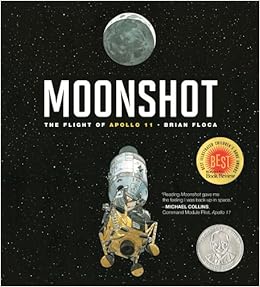By Ezra Jack Keats
Awards: Caldecott Medal from the American Library Association, 1963
New York Public Library’s 150 most influential books of the 20th century, 1996
The Snowy Day. What an all-time classic! The simplicity of text. The innocence of Peter playing in the first snow of the season. We can all relate to his wonder in so many things that he experiences: his footprints pointing out and then in, finding the perfect stick to help him explore in the snow, the clump of snow that falls out of the tree when he hits it, being hit by a way-to-big snowball thrown by the big kids (and the sting that follows), the snowman and the snow angels. Later, soaking in his tub and thinking about his adventures….
I was fascinated by Ezra Jack Keats’ personal story and inspiration for The Snowy Day. He wrote The Snowy Day in 1962. Peter, the main character is an African American little boy about four years old. (Ezra Jack Keats was white, by the way.) Even though in 1962, the civil rights movement was gaining attention and momentum, there were very few African American characters in children’s books...if any. Yet, Ezra Jack Keats was not out to make a civil rights statement at all. Years before, in the early 1940s, he had cut out four photos from a Life magazine showing an African American boy. The boy’s expression had captivated Keats, so Keats kept the photos in his writer's notebook for many, many years. When he got ready to write The Snowy Day, he used the adorable photos as his inspiration for Peter. Keats had grown up in a multi-cultural neighborhood and didn’t think it mattered what color the main character was—the enjoyment and wonder Peter experiences in the snow is what any child would experience—no matter what color, of course!
Keats went on to include Peter as a main character in several other books including: Whistle for Willie, Peter’s Chair and A Letter for Amy. Readers watch Peter grow into a pre-teen through these stories.
I have included several websites at the bottom of this review about Ezra Jack Keats. The NPR story link includes the photos that were the inspiration for Peter. Another website is from Keat’s foundation and includes his acceptance speech for the Caldecott where he explains his unusual art technique that he used for the book.
The story of Keats cutting out those photos in the 40s, saving them for 20 years and then using them as an inspiration for The Snowy Day, reminded me so much of what Ralph Fletcher and others have advised young writers for a long time. Simply—write down ideas /small moments that intrigue you or catch your attention in your Writer’s Notebook. You may not come back to it for a while, but if and when you do—it can blossom into an imaginative and clever piece of work. You just never know!!!
Oh yeah—back to mentor texts! The Snowy Day would be an excellent mentor to use for Narrative or Small Moment writing from Grade 1 on up!
Book Talk
Readers meet Peter, who wakes up to the first snow of the winter. After breakfast, he gets on his snowsuit and goes out to explore!
And explore he does! Perfect four-year-old little boy exploration! He makes his feet crunch in the snow—delighting in the noise—then he is even more delighted with the snow prints he makes! He tries out some different ways to make prints.
A stick is found and is added to the fun. More prints are made and then some knocking down of snow from a tree.
Peter longingly looks at the big boys’ fun during a snow fight-but gets jolted by a snowball and wisely decides he is not big enough for snowball fight yet. He settles on making a snowman and snow angles.
When the day’s exploration is done, Peter innocently —and famously— puts one more snowball in his pocket to keep for tomorrow’s anticipated fun. He soaks in his tub, thinks about his day and finally checks on that snowball one more time—-and of course, it is gone. To Peter’s dismay.
Some favorite lines: “He picked up a handful of snow—and another, and still another. He packed it round and firm and put the snowball in his pocket for tomorrow. The he went into his warm house. He told his mother all about his adventures while she took off his wet socks. And he thought and thought and thought about them.”
He dreams about the sun melting all the snow, but happily wakes up to the new piles of fresh snow outside. The story ends with Peter and a friend going out for another day to play in the glorious snow.
Suggested Uses as a Mentor Text:
Book Genre: Realistic Fiction
Reading Workshop strategies: connecting, inferring, questioning, summarizing, fluency, visualizing
Writing Workshop genre and strategies: Narrative Writing, Small Moment, Inspiring Writers
Ezra Jack Keats Foundation: http://www.ezra-jack-keats.org/section/about-ezra/
Caldecott acceptance speech: http://www.ezra-jack-keats.org/caldecott-award-acceptance/
NPR article on Keats with photos that inspired Peter’s character: http://www.npr.org/2012/01/28/145052896/the-snowy-day-breaking-color-barriers-quietly









